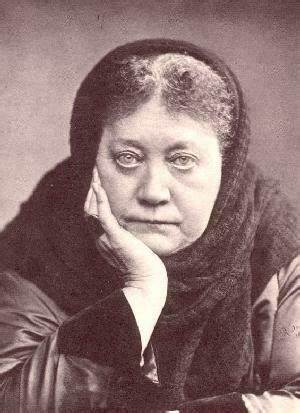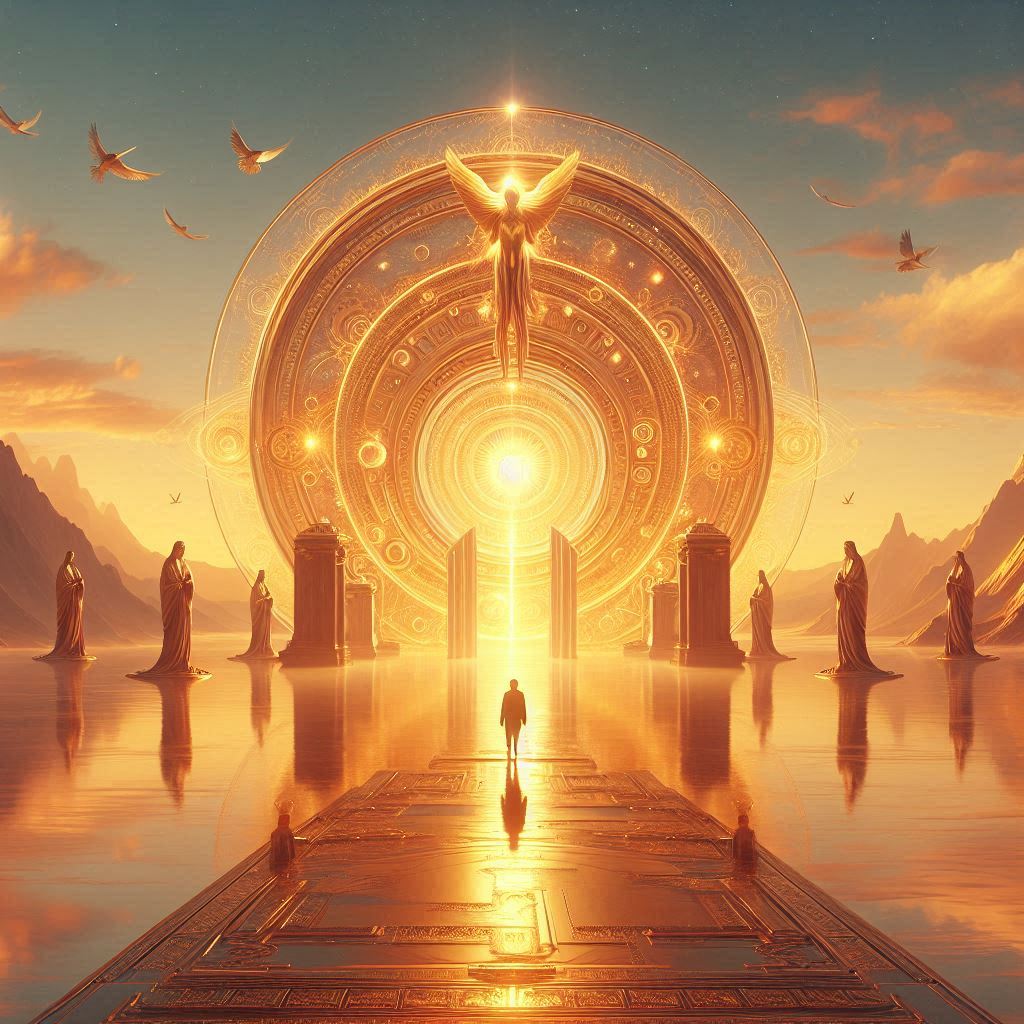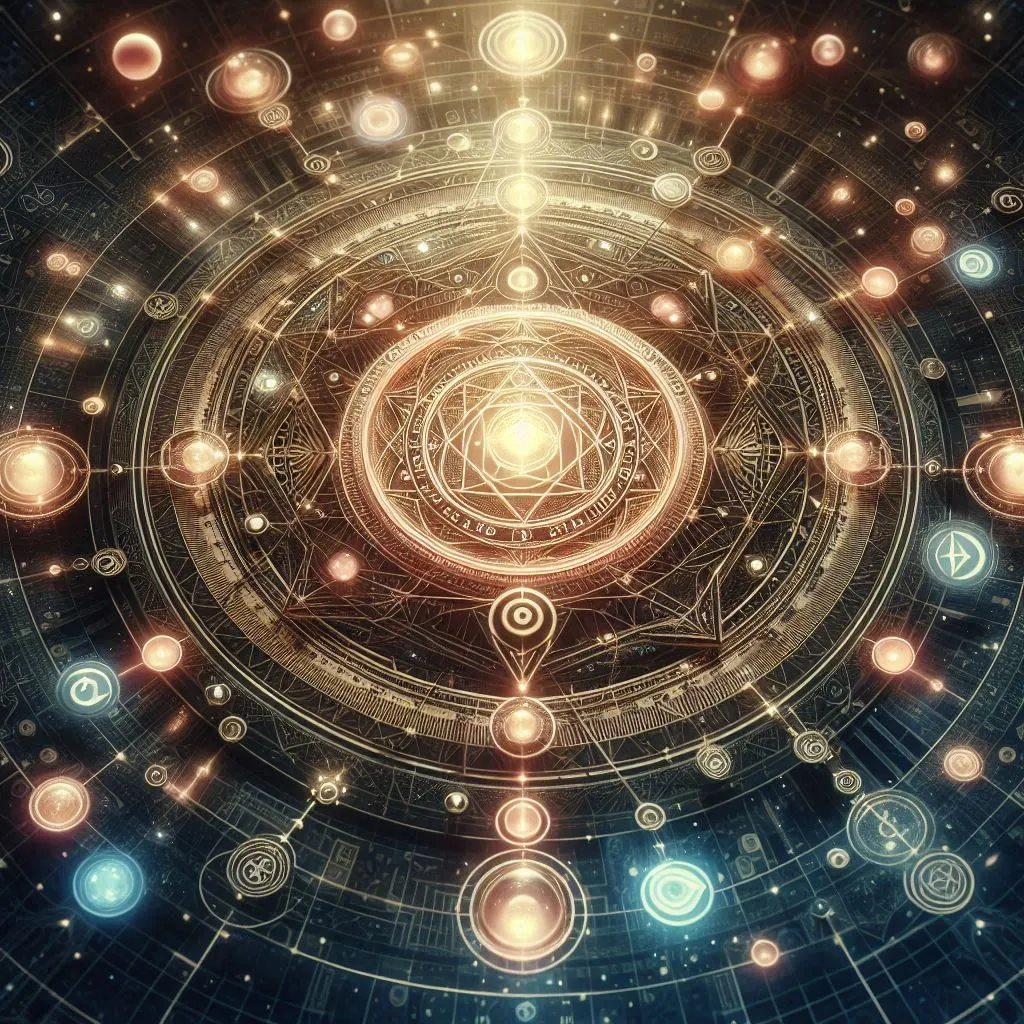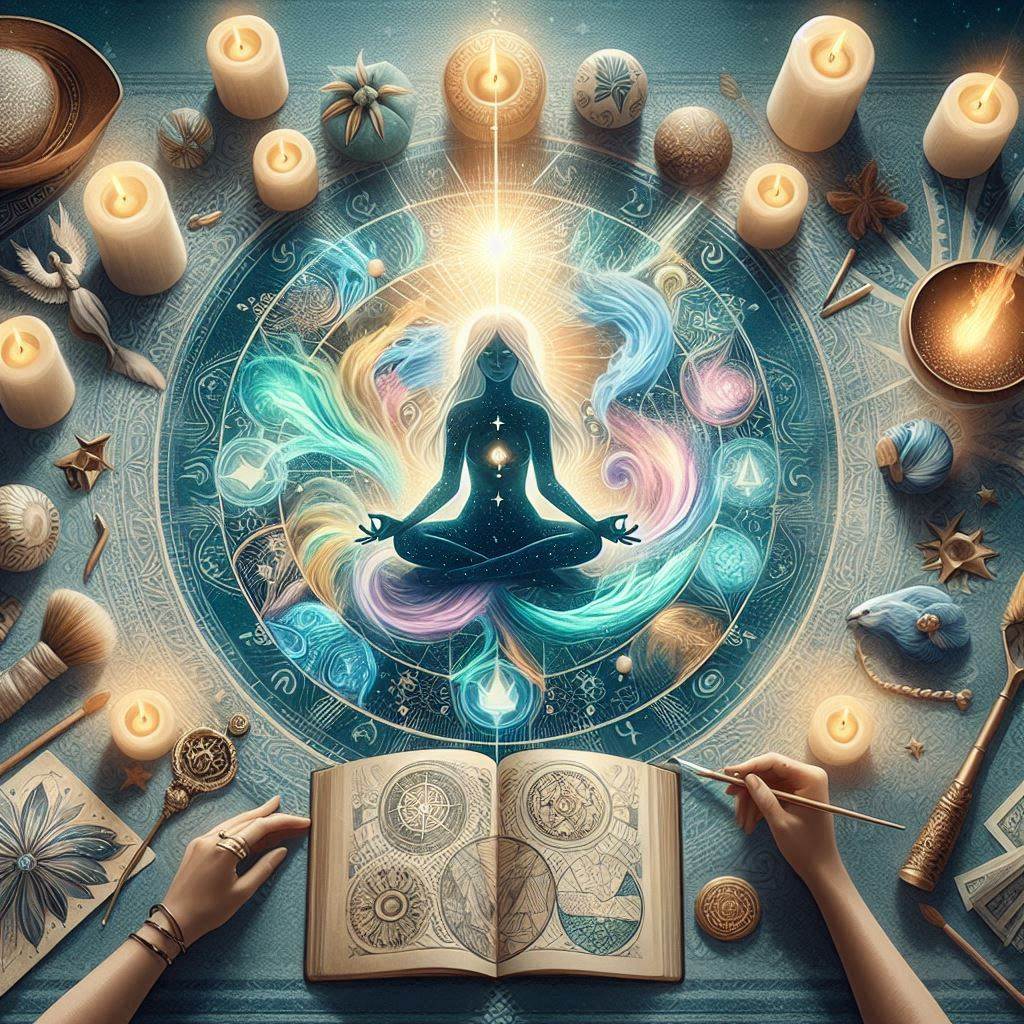Your cart is currently empty!
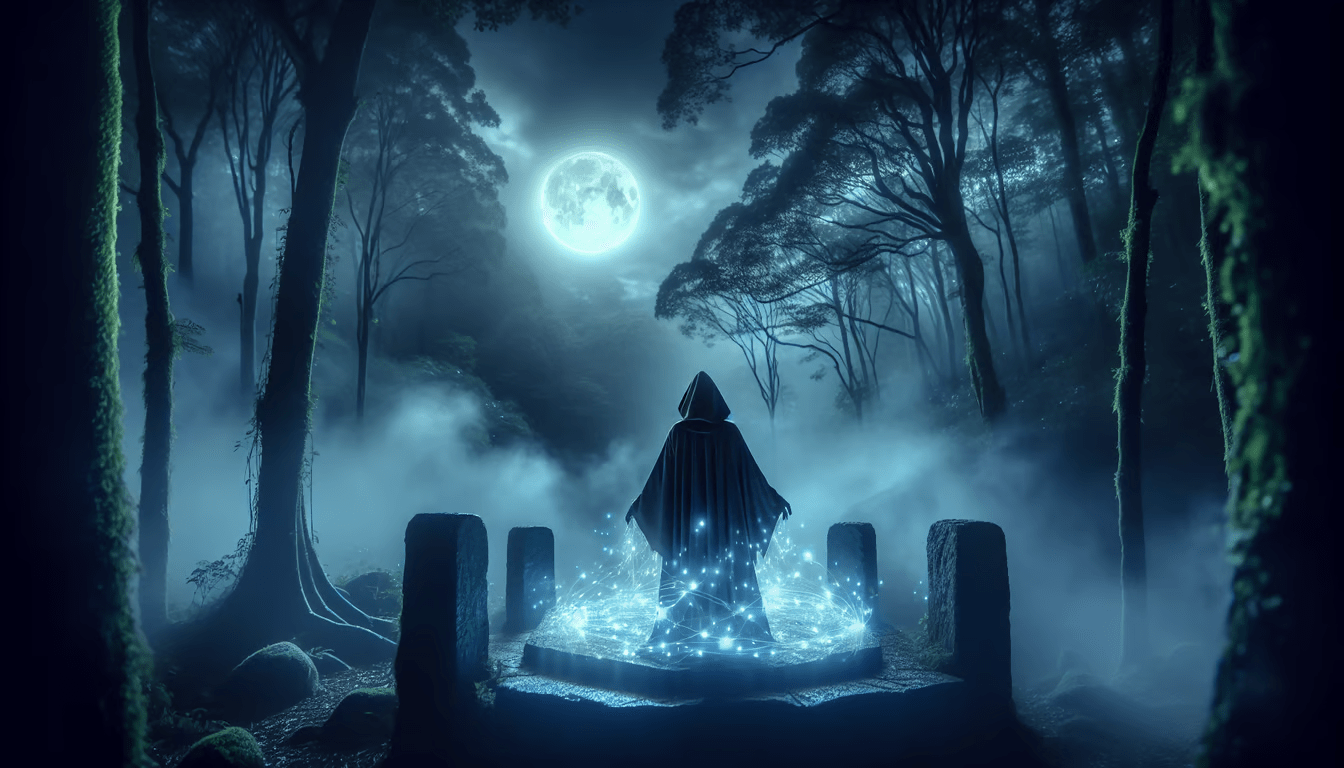
Resurrecting the Past: The Role of Necromancy in the Modern World
Since the dawn of recorded time, humankind has sought to break through the veil of mortality, listening intently to the secrets hidden within the underworld. Necromancy, a practice stemming from the ancient Greek words nekros (corpse) and manteia (prophecy), is the art of communing with the dead, to uncover truths unknown to the living. It promises insight into forbidden realms, where the echoes of the past linger, waiting to reveal their wisdom. While some may view necromancy as pure superstition or sensationalism, it holds deeper mysteries woven into the fabric of civilization itself. From ancient temples and shrines to the rituals of neo-pagan communities today, necromancy has been a thread linking us to those who have gone before. (Luck, 1985)
Necromancy, at its heart, is a dance with the otherworldly, a way to touch the infinite through rites that revere, invoke, and perhaps even command those who have crossed into the unknown. Through studying its historical and mystical facets, we can begin to understand why, even in our modern age, this ancient art continues to beckon us to look beyond the mortal realm. (Thorndike, 1923-1958)
The Ancient Origins of Necromancy
Long before it became cloaked in the dark robes of horror and superstition, necromancy was a revered practice in ancient civilizations, where it offered a pathway to enlightenment, wisdom, and even protection. From the temples of Mesopotamia to the towering pyramids of Egypt, the dead were honored as eternal guides—presences that could shield and illuminate the way for the living. (Bremmer, 1983)
Mesopotamian Beginnings: The First Necromancers
In the shadowed temples of ancient Mesopotamia, priests and mystics whispered prayers to the etimmu, spirits who roamed the boundaries between the living and the dead. These spirits, summoned through complex rites and offerings, were believed to answer questions and grant insights into mysteries that lay hidden from mortal eyes. Mesopotamian necromancers did not merely seek answers; they sought communion, a merging of worlds that would allow them to reach beyond the confines of life itself. Rituals to summon these ancestral spirits included sacred offerings of food, drink, and even animal sacrifices, in the hope that appeased spirits would return from the underworld to offer guidance. (Thorndike, 1923-1958)
Through the flickering shadows of fire and incantation, Mesopotamian necromancers believed they were calling upon a primal, elemental force, a spirit-world that existed alongside the realm of the living. To commune with the etimmu was to tap into an ancient and hidden world, one where the wisdom of generations past waited like buried treasure, waiting for those bold enough to seek it. (Davies, 2009)
Egyptian Connections: Osiris, Resurrection, and Afterlife Wisdom
In Egypt, the practice of necromancy was a pillar of spiritual life, woven deeply into their veneration of the afterlife. Egyptians saw death not as an ending, but as a passage to a new realm, where the soul—the ka—remained capable of influencing the living world. The dead were revered, not merely as spirits, but as ancestral deities who could protect and guide. The god Osiris, lord of the underworld, was the beacon of this practice, embodying rebirth and the mysteries of resurrection. (Zaleski, 1988)
Texts like the Book of the Dead were not mere mortuary guides but powerful manuals for traveling through the underworld, offering spells and rituals to connect with the dead. Egyptians saw necromancy as an art of honoring the dead and invoking their wisdom, using it to shape their futures, receive blessings, and even ward off danger. Each ritual and incantation was a key to the spirit world, a tool to unlock the vast realm of the unknown. (Luck, 1985)
The Greeks and Romans: Hades, Oracles, and the Shadow Realm
For the Greeks and Romans, necromancy was a ritualistic, sacred act, a way to transcend the boundaries of mortality and plunge into the shadowy depths of the underworld. In Homer’s Odyssey, Odysseus performs a haunting necromantic ritual to summon the spirit of Tiresias, the blind prophet, who alone holds the answers to Odysseus’s fate. This act, known as nekyia, was a glimpse into the ritual world of Greek necromancy, where summoning the dead was a sacred art used to pierce the boundaries of life and death. (Bremmer, 1983)
The Romans, too, held necromantic rites. The festival of Parentalia was a time for the living to honor their ancestors by offering food, wine, and gifts to their spirits. Sacred sites like the river Acheron and the necromantic oracles at Baiae drew pilgrims who sought wisdom, guidance, or even warnings from beyond the grave. Necromancy, to the Greeks and Romans, was a spiritual journey into the unknown, an opportunity to commune with the divine essence of those who had passed. (Faraone, 1999)
Medieval Necromancy: A Practice Veiled in Darkness
In medieval Europe, necromancy transformed into what many today view as “dark magic.” As Christianity spread, necromancy fell into disfavor, deemed a threat to the Church’s authority over life and death. Seen as a form of heresy, it was feared, vilified, and eventually hunted. The necromancer became a figure cloaked in shadow, often accused of trafficking with demons and subverting the divine order. (Davies, 2009)
Despite the Church’s attempts to quell it, necromancy flourished in secrecy. Medieval practitioners delved into grimoires—books that contained hidden spells and ancient rituals. Among them was the Ars Notoria, a grimoire said to be penned by King Solomon himself, which contained rites for summoning, commanding, and even binding spirits. Medieval necromancers were fascinated by the dark allure of controlling spirits to gain insight into the future or to influence events in the material world. (Thorndike, 1923-1958)
Yet medieval necromancy was not solely about summoning spirits. It involved intricate rituals, astrological timings, and sacred symbols, each tool serving as a bridge between the worlds. Practitioners used these tools to channel hidden energies, cloaking their practices in secrecy to avoid persecution. In those days, to practice necromancy was to walk a fine line between power and peril, courting wisdom at a cost few dared to pay. (Stratton-Kent, 2010)
The Mystical Tools of Necromancy
Necromancers of old were never without their tools and symbols—objects charged with energy and symbolism, each meticulously chosen to strengthen their ties to the spirit world. To call forth a spirit was to create an environment rich in symbolism, a space that invited the dead and guided the practitioner safely through their rites.
Ritual Objects and Symbols
Candles, skulls, bones, and herbs like myrrh and frankincense adorned the necromancer’s altar, each with its own significance. Skulls, seen as the vessel of wisdom, symbolized a direct link to the departed soul. Black candles believed to bridge the material and spirit realms, flickered in darkness as a silent invitation to the world beyond. Frankincense was burned to purify the space, driving away hostile entities while opening the path for benign spirits. (Wright, 2016)
Symbols—pentagrams, hexagrams, and arcane markings—acted as portals, sanctifying the ritual space. Drawn carefully in chalk or carved into the ground, these symbols were sacred to the necromancer, acting as barriers against unwanted forces. Each line, each form, was part of a larger spell, an ancient code meant to align the practitioner with energies from beyond the earthly plane. (Davies, 2009)
Astrology and the Influence of the Stars
Astrology held a special place in necromantic practice, for necromancers believed the alignment of the planets and stars could open portals to the spirit world. Certain phases of the moon, particularly the dark of the new moon, were seen as ideal times to summon spirits, when the boundary between life and death was at its thinnest. Many necromancers studied the heavens as much as they did their books, searching the night sky for moments when the spirit world seemed to draw closest to our own. (Thorndike, 1923-1958)
Necromancy as a Portal to Divination
Inextricably tied to divination, necromancy offered ancient practitioners insights from a world untouched by time. The Greeks often merged necromancy with oracular practices, where priests would summon spirits in search of prophecy. The Romans practiced haruspicy, examining the entrails of sacrificed animals to divine the will of the spirits. Each act was performed with reverence, believing that the spirit world could reveal truths hidden from mortal sight. (Faraone, 1999)
In later centuries, scrying—using mirrors, water, or glass to channel visions—became a favored tool for necromancers seeking to unveil secrets. The reflection was believed to hold glimpses of the other world, and by focusing on its depths, practitioners hoped to communicate with spirits or gain insights into their own destinies. (Luck, 1985)

The Neo-Pagan Revival: A New Dawn for Necromancy
In our modern era, necromancy has found new life, embraced by neo-pagan and occult movements as a sacred practice. Modern necromancers approach the art not merely to summon spirits but to honor their ancestors and gain personal insight. For them, necromancy has shed much of its darkness, transforming into an act of reverence, a way to acknowledge the eternal presence of those who have passed. (Valiente, 1987)
The Allure of Necromancy in Pop Culture
Today, necromancy holds a unique place in popular culture, appearing as a trope in movies, literature, and games. Whether in the form of Tolkien’s enigmatic “Necromancer” or the dark magic of video games like Dark Souls, necromancy captivates as an eternal human quest for the unknown, embodying both our fears and our fascination with death and the beyond.
The Mystical and Ethical Implications of Necromancy
In the modern world, necromancy raises questions that resonate as deeply as its ancient mysteries. What are the risks of reaching into the unseen? For some, modern necromancy serves as a psychological ritual, a way to come to terms with loss or mortality. Yet others warn of the dangers—both mental and spiritual—that such practices might pose. (Wright, 2016)
By touching on necromancy, we engage with a profound and primal need to reach beyond. For the living, it is an art of remembrance, a way to honor those who came before us while attempting to unearth the deeper mysteries of our existence. (Zaleski, 1988)
Bibliography
- Bremmer, Jan N. The Early Greek Concept of the Soul. Princeton University Press, 1983.
- Davies, Owen. Grimoires: A History of Magic Books. Oxford University Press, 2009.
- Faraone, Christopher A. Ancient Greek Love Magic. Harvard University Press, 1999.
- Luck, Georg. Arcana Mundi: Magic and the Occult in the Greek and Roman Worlds. Johns Hopkins University Press, 1985.
- Owen, Alex. The Darkened Room: Women, Power, and Spiritualism in Late Victorian England. University of Chicago Press, 2004.
- Stratton-Kent, Jake. Geosophia: The Argo of Magic. Scarlet Imprint, 2010.
- Thorndike, Lynn. A History of Magic and Experimental Science: Volumes I-VII. Macmillan, 1923-1958.
- Valiente, Doreen. Witchcraft for Tomorrow. Phoenix Publishing, 1987.
- Wright, Gregory. The Necromancer’s Notebook: A Guide to Necromancy. Createspace, 2016.
- Zaleski, Carol. Otherworld Journeys: Accounts of Near-Death Experience in Medieval and Modern Times. Oxford University Press, 1988.


